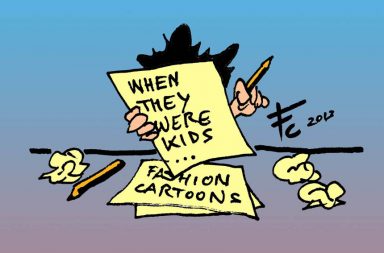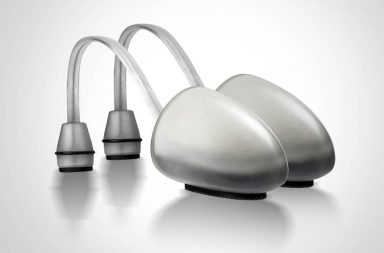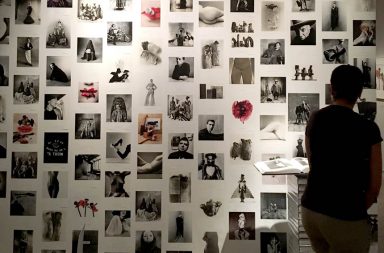We find ourselves running into professionals and entrepreneurs, in all sectors, who are able to combine their dream job with their real one; their hobbies actually pay the bills. This is the case with Juan Delgado, who, through hard work, perseverance and just doing things right has turned himself into a highly sought after photographer. His touch, his spontaneous photographs and, above all, his lifestyle, give every moment that certain ‘je ne sais quois’ that really speaks to us.

Juan Delgado
SOCATCHY!: Juan, how did you get into the world of Photography when you started out in a completely different career?
Juan Delgado: I studied Industrial Engineering because my father was an industrial engineer and at 18 I only thought about going out, having fun and not much more. My father has a good business so I thought I’d follow in his footsteps without really knowing what I wanted at the time. As I was studying engineering, I realized that there were other things you can do in life, things they don’t tell you about when you’re young, unfortunately. The only thing people say is, “There’s no money in that”, it seems like there are only 3 things you can study. Later on, you meet someone who does something different and you say, “Wow, I want to do that”. So I began to get involved in music and cinema, I still wasn’t thinking about photography though. I absolutely love cinema. Maybe that’s where I learned the most about photography. Cinema is like constantly looking through catalogues, it’s fresher, it’s stronger, more transcendental, and it stays in your memory longer. Sometimes I look at fashion photography and I say, “How pretty” and later I forget what I’ve seen. However, I can watch any Fellini film and remember every scene.
In my fourth year [of university] I told my father that I didn’t like the career, that I didn’t want to be an engineer and so he asked me, “What do you want to do?”, I didn’t have a clear answer so the most sensible thing was to follow my father’s advice, “You’ve got to finish this”. So I finished the degree but I knew that this wasn’t my career, at that time I still didn’t know how to make a living from cinema or music, I hadn’t even thought about it.
SC!: Did you study your degree and photography at the same time then?
JD: As I was finishing my degree, I had my camera and I went around taking pictures of things I saw, anything that caught my eye, that’s all. That’s when I met her (points to Evelyne, his partner), right at the end of university, but she had one year left so I said, “How about I move to Belgium with you and study photography there for one year”. But not another degree, I’d already had enough after 8 years of engineering. So I was completely self-taught. I bought some books, Photoshop, some photographs for reference and composition. I started taking pictures and studying technique, how to use my camera, to train my eye, and take a lot of photos. When I returned, we went to Madrid and I did a Master’s in advertising. At the time I thought that I preferred advertising to photography, doing campaigns, making logos, but as I was studying I realized that I really wanted to keep taking photographs. I got some work making logos, doing graphic design and things like that and people would say to me, “Why don’t you take the pictures too, you seem to like it”. That was the beginning; I started taking product photos for SCALPERS, back when they were starting out.
Bit by bit, I got into the rhythm and other jobs popped up. Then I got some work with the Chamber of Commerce, some small projects. In the end I decided to return to Seville, a city with a lifestyle that I love, and to my studio there. Truthfully, I don’t have a home base. Most of my clients don’t even know where I am. I go to them, rent equipment and do things that way.
Nowadays I make a living off of photography and I’ve been doing it exclusively for 5 years.
SC!: Getting back to cinema, which is such an inspiration for your photography; what films, which director or trends in cinema are the sources of your inspiration? What else inspires you?
JD: Italian cinema is perhaps the most important: Fellini, Bertolucci, Vittoria de Sica, Sergio Leone, Visconti. But also French cinema, Truffaut, Rohmer or Godard; and I love surrealistic North American cinema, David Lynch for example and a lot of Woody Allen’s work. But, the film that’s probably taught me the most was “Blue Velvet” by David Lynch. I watch it and I feel like that’s it!
Art also inspires me: Edward Hopper, David Hockney, Renoir classics, impressionist portraits, any paintings that you see in a gallery and that draw you in. I like the biographies of musicians too, Patty Smith or Freddie Mercury. Nothing gets to me like listening to Freddie Mercury, I get excited, his life, his work, his personality, it makes me want to take more photos. I also like the paparazzi Ron Galella.

SC!: Tell us how you go about doing a fashion campaign. Do you have creative freedom?
JD: When it’s advertising and it comes from an agency that hires me, they come with everything prepared, they even give me sketches. Sometimes I get work directly from a company, without an agency and so I do the work of the ‘agency’. I do the art direction, styling, production. In fashion, they usually tell you what they want. The best is when a designer shows up with a collection and a ‘slight idea’ of what they want, I love that, and they let me do my thing. I propose things but I’m always mindful of the style of the brand.
SC!: Speaking of style, what do you think your signature style is, your brand, what makes you different than other photographers?
JD: I try to make photographs that say something; I don’t always focus on having everything perfectly lit, etc. I make pictures that speak to you. Also, there’s the way I am when I’m shooting. Oftentimes, designers come back to me because they have a good time. We work well as a team and everything is creative. The way I work is a plus. Anyone can learn the technique and there are people who, in the time that I’ve been working in photography I don’t consider myself as good as. I focus on what I’m good at, which is making pictures speak. It’s like when you see a Polaroid photo and your hairs stand on end, no technique, nothing, and it doesn’t matter, the picture talks to you. That’s where I want to be.
SC!: Any jobs or photographs that make you feel especially proud?
JD: I couldn’t say. It changes so often, with every new picture. I’ve always got a favorite photograph. And usually it’s one of the more recent photos that I’ve made.
SC!: What do you need to be, in your opinion, a good fashion photographer?
JD: Taste. If not, you can tell. Good taste is fundamental.

SC!: And is taste nature or nurture?
JD: I think that taste is something you can cultivate, although there are people who are born with it. I don’t believe in the gift of creativity. There are many creative people who don’t even know it. There are techniques for developing your creativity, in reality we’re all crazy, some people just control it more, people who don’t control it might be more creative. I think it’s a question of filters, filters that society puts on us. Children are all equally creative and crazy; it’s society that makes us less creative, because they tell us that what’s ugly, what we shouldn’t do. Give a camera to a kid and see what happens. You have to express your creativity, even if you filter it later.
SC!: In what project have you really been able to express yourself?
JD: I’m myself in most of the photographs that I’ve done for campaigns. When they say, for example, “ok, we’re done, now you can do what you like”, that’s when I really shine. That’s why my website Bynite reflects who I am so well. It’s got spontaneous photos, quick shots, they speak, they’re more than just giving instructions like “stand there, do that”.
SC!: And what do you want to say with your photographs?
JD: Feelings, emotions, that you feel something when you see them, that you don’t forget them. There’s a photographer that I love called Juergen Teller, he makes photos that seem to be shot on a whim and carefree even, but they make you feel something. He’s worked for Marc Jacobs, Céline, Missoni, and Moschino. For example, I love the one with the octopus on the bed; it can mean so many things. Or the one of Vivienne Westwood, the designer, naked.
That’s why, for documentary photography, spontaneity doesn’t really fit. Spontaneous photography is what defines me, most of the time, the pictures that I like best are the ones that have been less thought out.
SC!: Where do you see fashion photography going?
JD: I don’t think there is a definite future. It could be anything. Maybe there will be campaigns done with an iPad, or with Polaroid. Or maybe there won’t even be photos, but mini videos or frames, just a concept film of fashion, because people like to shake things up. Look at the ASOS website, for example, now they not only have photos but they have a catwalk. People do a lot of shopping online so the biggest fear is whether or not what you’re buying will look good on you. Videos are better because it’s harder to retouch a video (for now). The model comes out on the catwalk and does a turn and you can see if the fabric has wrinkles, if it’s tight, the texture, and the shine. You can see it better in the video. I think that the future of fashion photography could be mini videos, without a script, two or three frames of movement.
SC!: Do you think that’s better than a scripted video, than a fashion film?
JD: I think so, two or three frames and that’s it. Think about it, a model walking and, suddenly she picks something up and throws it. That’s it. Or she flashes a smile and stops. Or the model goes from being happy to being pissed off, like you’d asked her something. Mini-videos that say something. Emotion is an important part of it.
SC!: What do you think about fashion films, two or three minutes long and scripted, that are so popular these days?
JD: They can be a bit boring and not really make you feel anything. You’ve got to do them really well. All the videos on showstudio.com the fashion website created and run by Nick Knight, are good points of reference for quality films. I think that’s where they’ll be heading in the future.

SC!: Where do you see yourself in the near future?
JD: In photography
SC!: What are your objectives?
JD: To continue learning and growing, and to keep working hard. I value self-fulfillment and I want people to value me. But, at the same time, it’s not just about a brand; it’s about people that I admire being interested in my work.
SC!: A dream that, for now, is unattainable.
JD: To have my own fashion magazine. Art and fashion combined.
SC!: Are there any blogs, websites or magazines that inspire you?
JD: Yes, in Spain and abroad. In Spain, apart from the well-known Harper’s Bazaar and Vogue, I like Tiger and anything by Luis Venegas. Abroad, Purple Fashion, Self Service. The mixture of art, fashion, music and interesting articles, it’s a source of inspiration. When I pick up a copy of Purple Fashion, it’s like being on vacation and reading a good book. And the interviews with artists are really good. They don’t ask typical questions, they’re the type of questions that I’d like to ask. And it motivates me. Recently I saw an incredibly effective campaign done with a Polaroid camera and now I want to buy one.
Translation and Layout by Michael Padilla





